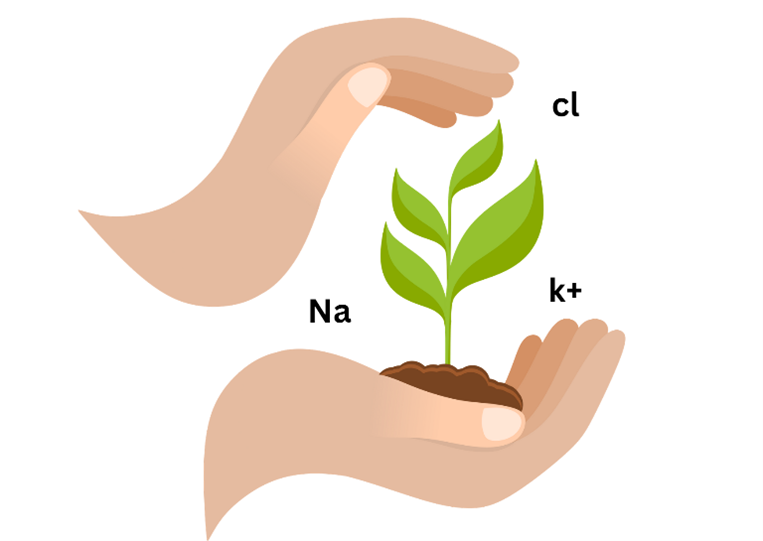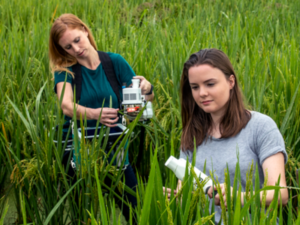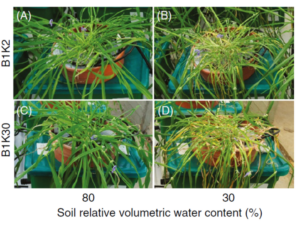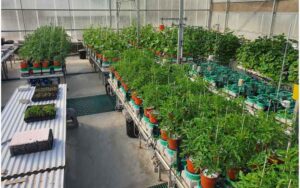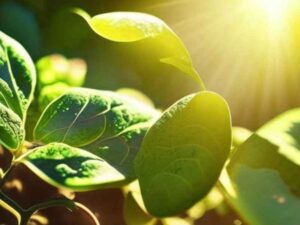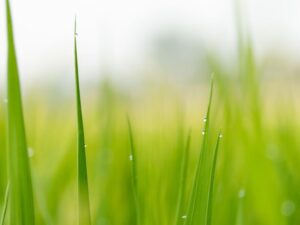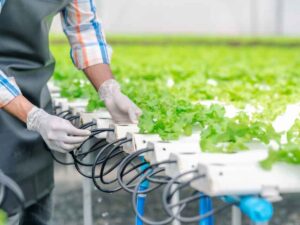What is salt?
Salt is a chemical compound composed of two elements: sodium (Na) and chloride (Cl). It is a crystalline solid that is commonly used as a seasoning and preservative in food, as well as in various industrial applications. The most common salt used for culinary purposes is table salt, which is chemically known as sodium chloride (NaCl).
Salt is a chemical compound composed of two elements: sodium (Na) and chloride (Cl). It is a crystalline solid that is commonly used as a seasoning and preservative in food, as well as in various industrial applications. The most common salt used for culinary purposes is table salt, which is chemically known as sodium chloride (NaCl).
Salinity refers to the presence of high levels of dissolved salts, particularly sodium chloride (NaCl), in soil or water. It is a widespread environmental issue that affects agricultural productivity, natural ecosystems, and water resources worldwide. Salinity can occur naturally in areas with high salt content in the soil or can result from human activities such as irrigation practices and improper waste management. Understanding salinity and its impacts is crucial for developing strategies to mitigate its effects and ensure sustainable land and water management.
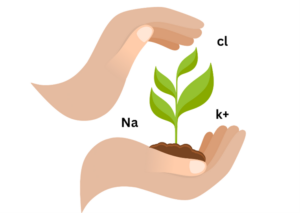
How plant’s salinity linked to climate change?
Salinity in plants is intricately linked to climate change. As our planet experiences shifts in weather patterns, rising temperatures, and altered precipitation regimes, the salinity of agricultural lands and water bodies undergoes significant changes, presenting numerous challenges for plant life.
Climate change can exacerbate salinity in two primary ways. First, as global temperatures rise, evaporation rates increase, leading to intensified salt concentration in water bodies and soil. This can result in the salinization of freshwater sources and agricultural fields, making them inhospitable for many plant species. Additionally, altered rainfall patterns associated with climate change can disrupt the natural balance of salts in ecosystems. Decreased rainfall and drought conditions may limit freshwater input, causing salt levels to rise in areas affected by saltwater intrusion, such as coastal regions.
The consequences of increased salinity on plant physiology and productivity are profound. Salt stress hampers plant growth by disrupting water balance and nutrient uptake. As the concentration of salt in soil or water surpasses a plant’s tolerance threshold, it restricts water availability to the roots, leading to water stress and wilting. Moreover, excess salt ions can interfere with essential nutrient absorption, disrupting vital metabolic processes. These combined effects impede photosynthesis, reduce biomass production, and ultimately diminish crop yields.
Furthermore, the relationship between salinity and climate change operates in a feedback loop. On one hand, the intensification of salinity can decrease the ability of plants to sequester carbon dioxide, an important greenhouse gas. Reduced plant growth and productivity result in diminished carbon uptake from the atmosphere, potentially amplifying climate change. On the other hand, climate change-induced salinization threatens food security and agricultural productivity, compromising the resilience of human communities to the impacts of a changing climate.
To address the challenges posed by salinity and climate change, interdisciplinary efforts are required. Implementing sustainable agricultural practices that optimize water management, such as precision irrigation and water recycling, can help mitigate salinization. Research on salt-tolerant crop varieties and genetic engineering techniques can aid in developing resilient plants capable of withstanding high-salt conditions. Additionally, raising awareness about the linkages between salinity and climate change can foster informed decision-making and support adaptive strategies at the local, regional, and global levels.
In conclusion, salinity in plants and its connection to climate change represent a critical concern for agricultural productivity and the ecosystem health. By understanding and addressing these complex interrelationships, we can work towards building a more resilient and sustainable future for our plant species and the planet as a whole.
How salinity effects plants and crop productivity?
Salinity has detrimental effects on plant growth and crop productivity. High salt concentrations in the soil can create an osmotic imbalance, leading to reduced water availability for plants. This water stress can result in reduced nutrient uptake, impaired cell function, and inhibited plant growth. The osmotic stress caused by salinity also affects the germination of seeds, limiting successful plant establishment.
Salt stress can further disrupt plant physiology by interfering with ion homeostasis. Sodium ions (Na+) and chloride ions (Cl-) can accumulate in plant tissues, leading to ion toxicity. These ions can disrupt enzyme activities, protein synthesis, and membrane integrity, impairing overall plant health and function. Additionally, the high salt levels can induce oxidative stress by generating reactive oxygen species (ROS), leading to cellular damage and oxidative injury.
Not only do plants suffer from the direct effects of salinity, but salinity also impacts soil health and fertility. High salt levels can cause soil degradation, reduce soil structure, and impede water infiltration. Salinity can result in the displacement of essential nutrients like potassium (K+), calcium (Ca2+), and magnesium (Mg2+), making them less available for plant uptake. This nutrient imbalance further exacerbates the negative effects of salinity on plant growth and productivity.

Salinity also has significant ecological consequences. In natural ecosystems, high salt levels can alter species composition and biodiversity. Many plant species are sensitive to salinity and cannot tolerate the harsh conditions, leading to a decline in native vegetation. This, in turn, can affect the availability of food and habitat for other organisms, impacting overall ecosystem functioning.
Furthermore, salinity impacts water resources and quality. Excessive salt in irrigation water can accumulate in agricultural soils over time, reducing their fertility and water-holding capacity. This accumulation can lead to a decrease in crop yields and the need for additional freshwater resources for irrigation, exacerbating water scarcity issues. In coastal areas, salinity intrusion into freshwater sources can compromise drinking water supplies and disrupt aquatic ecosystems.
Are all the plants have the same s sensitivity to salinity?
No, not all plants have the same sensitivity to salinity. Different plant species have varying degrees of tolerance to salt levels in the soil or water. Some plants are highly sensitive to even moderate levels of salinity, while others have evolved mechanisms to cope with and thrive in high-salt environments. The level of salt tolerance in plants can depend on various factors, including their genetic makeup, evolutionary history, and ecological adaptations.
Which plant species are more resistant to salinity?
These plants possess adaptations that enable them to withstand high salt concentrations in the soil or water, making them ideal choices for landscapes with high salinity levels or coastal regions.
- Mangroves: Mangrove trees and shrubs are well-known for their ability to grow in coastal areas with high salinity levels. They have specialized root structures that filter out saltwater, and some species even excrete excess salt through specialized glands on their leaves.
- Saltbush (Atriplex spp.): Saltbush is a hardy shrub that is native to arid and semi-arid regions. It has the capacity to accumulate salt in its tissues without suffering from salt toxicity. Saltbush is often used in land reclamation projects and forage production in saline soils.
- Seashore Paspalum (Paspalum vaginatum): This grass species is commonly found along coastlines and can tolerate a wide range of salinity levels. Seashore paspalum is often used for turfgrass in coastal areas due to its natural salt tolerance.
- Glasswort (Salicornia spp.): Glassworts, also known as pickleweed, are succulent plants that thrive in saline marshes and salt flats. They can accumulate high concentrations of salt in their tissues without detrimental effects. Some species of glasswort are even considered halophytes (plants specifically adapted to high salt environments).
- Samphire (Sarcocornia spp.): Samphire is a genus of plants that includes several salt-tolerant species. They are often found in coastal areas and have adapted to saline soils. Samphire is commonly used in culinary dishes due to its unique flavor.
- Tamarisk (Tamarix spp.): Tamarisk, also known as saltcedar, is a deciduous shrub that can tolerate high salt concentrations. It has deep roots that can access groundwater in saline soils. Tamarisk is often used in erosion control and reforestation efforts in arid and saline regions.
- Halophyte grasses: Various grass species, such as alkali grass (Puccinellia spp.) and saltgrass (Distichlis spp.), exhibit natural salt tolerance. These grasses are commonly found in saline habitats like salt marshes and alkali flats.
It’s important to note that while these plants are naturally adapted to tolerate salinity, their specific salt tolerance levels may vary. Additionally, the success of planting salt-tolerant species in saline environments depends on factors such as soil composition, drainage, and other environmental conditions.
Which plant species are more vulnerable to salinity?
Certain plants are more vulnerable to salinity stress and susceptible to the negative effects of high salt levels. Here are some examples of plant groups that are generally considered more vulnerable to salinity:
- Glycophytes: Most terrestrial plants fall under this category, as they are adapted to non-saline environments. These plants have lower salt tolerance and can be negatively affected by even moderate levels of salinity. Examples include many crop plants like wheat, rice, corn, soybeans, and various fruits and vegetables – The most common and consumed plants by the majority of the world’s population
- Freshwater wetland plants: Plants that naturally grow in freshwater wetland ecosystems, such as marshes, swamps, and bogs, are typically sensitive to salinity. These plants have not evolved mechanisms to tolerate high salt concentrations and can suffer from salt stress when exposed to saline conditions.
- Shade-intolerant plants: Some shade-intolerant plants, which are adapted to grow in open, sunny environments, can be more vulnerable to salinity. They may have more limited mechanisms to cope with high salt levels, making them susceptible to salt stress. Examples include certain grass species and some herbaceous plants.
- C3 plants: C3 plants, which include the majority of temperate and cool-season crops, tend to be more sensitive to salinity compared to C4 plants. C3 plants have a different photosynthetic pathway that is less efficient in utilizing carbon dioxide under saline conditions. Examples of C3 plants include wheat, rice, soybeans, and many leafy vegetables.
It is important to note that while these plant groups are generally considered more vulnerable to salinity, there can still be significant variation within each group. Some varieties or cultivars within a vulnerable group may exhibit greater salt tolerance due to genetic adaptations or breeding efforts. Furthermore, even plants that are considered more tolerant to salinity can still be negatively affected by excessively high salt concentrations.
Salinity tolerance is a complex trait influenced by various factors, including the specific mechanisms plants employ to cope with salt stress. Understanding the salt tolerance of different plant species and identifying suitable salt-tolerant varieties is crucial for effective land and water management, especially in areas affected by salinity.
Can plants adapt salinity resistance?
Yes, plants have the ability to adapt to salinity resistance to some extent. While some plants naturally possess traits that enable them to tolerate high salt levels, others can develop salt tolerance through a process called acclimation or adaptation.
When exposed to moderate levels of salinity over time, plants can undergo physiological and biochemical changes that help them cope with the salt stress. These adaptations may include:
- Ion Exclusion: Plants can actively exclude salt from their roots or limit the transport of salt to their leaves. They may regulate ion channels and transporters to minimize the uptake of toxic ions like sodium (Na+) and chloride (Cl-) from the soil.
- Ion Transport and Compartmentalization: Some plants have mechanisms to selectively transport and compartmentalize salt ions within their tissues. They can sequester salt in specialized cell compartments, such as vacuoles, to maintain lower ion concentrations in the cytoplasm.
- Osmotic Adjustment: To combat osmotic stress caused by high salt concentrations, plants may accumulate compatible solutes or osmoprotectants, such as proline or glycine betaine. These compounds help maintain cellular water balance and protect plant cells from dehydration.
- Antioxidant Systems: Salinity stress can induce the production of reactive oxygen species (ROS) within plant cells, which can cause oxidative damage. Plants can enhance their antioxidant systems, including enzymes like superoxide dismutase (SOD) and catalase (CAT), to scavenge and neutralize ROS.
- Hormonal Regulation: Plant hormones, such as abscisic acid (ABA), play a role in regulating responses to salinity stress. ABA helps in stomatal closure to reduce water loss and can also trigger signaling pathways that activate various stress-responsive genes.
How the industry addressing salinity problem?
Research and technological advancements play a pivotal role in the development of salt-tolerant crop varieties, whether through breeding or genetic engineering. These innovative approaches are essential for enhancing the ability of crops to withstand higher salt levels and maintain optimal growth and productivity even in saline conditions. By introducing traits like ion exclusion, osmotic adjustment, and improved water use efficiency, researchers aim to create crops that can thrive in challenging saline environments.
Efficient monitoring and modeling of salinity levels are also vital in identifying and managing areas affected by salinity. Early detection of salinity-related issues enables prompt and effective intervention. Researchers utilize conventional breeding techniques or genetic engineering methods to introduce the desired traits into crops. However, the process of finding these salt-tolerant varieties often requires repeated experiments until the desired strain is obtained.
This is where our innovative PlantArray system comes into play. Our system has been specifically designed to accelerate the research process, reducing it from multiple seasons to just a matter of weeks. By controlling and monitoring experiments, the PlantArray system provides real-time information throughout the entire course of the experiment. This technology enables researchers to gather data, analyze results, and make informed decisions more rapidly, ultimately expediting the development of salt-tolerant crop varieties.
How can you find the best salt tolerant crop?
Our PlantArray system can indeed be helpful to breeders in identifying the perfect salt-resistant seed through their experiments. The PlantArray system is a sophisticated technology that combines high-throughput screening techniques and analytics, and was developed precisely for researchers trying to find the best strain for their needs.
With its high-throughput screening, the PlantArray system by Plant Ditech allows breeders to simultaneously test a large number of plant samples for salt resistance. This high-throughput screening capability saves significant time and resources by automating the testing process.
How this is happening?
With salt stress simulation: The system can create controlled environments where plants are subjected to varying levels of salt stress. This simulation helps breeders mimic real-world conditions and assess how different plant varieties respond to salt stress.
During the experiment, the PlantArray system collects and analyzes data on various plant traits, including Bio-mass, stomatal conductance, root influx, and other indicators of salt resistance. By capturing this data, breeders can evaluate the performance of different plant varieties under salt stress.
Overall, the PlantArray system expedites the screening and evaluation process for salt-resistant seeds by automating data collection, and genetic analysis. eventually, the data presented to the researchers in an accessible way, supplied valuable insights, enabling breeders to select and develop superior plant varieties that can thrive in salt-affected environments.
How can I get a PlantArray system?
Contact us using the tab on the side of the page or through the ‘Contact Us‘ page and we will get back to you soon with all the details.

